#iran archaeology
Text

A 5200-year-old pottery bowl from Shahr-e Sukhteh bearing what could possibly be the world's oldest example of animation. It shows 5 images of a wild goat leaping, and if you put them in a sequence (like a flip book), the wild goat leaps to nip leaves off a tree. Museum of Ancient Iran
10K notes
·
View notes
Text
Tomb Raider would be Eager for Journey in Iran.

The following article outlines the arcaeological value of Iran.And whether guys would refuse it,or not it's True:Tomb Raider would be Eager for aJourney in Iran.
Below:Our beloved action girl,and archaeologist iss in grand adventures:

Nothing can stop her.It's real wholesome:)

TEHRAN – Deep within the heart of Iran lies the awe-inspiring site of Tang-e Chogan, a captivating testament to the grandeur of the Sassanid Empire (224–651).
Visiting Tang-e Chogan (literary meaning “Chogan gorge”) is an immersive experience, allowing travelers to traverse the corridors of time and witness the grandeur of an ancient empire. The journey to this historical site involves navigating through awe-inspiring landscapes, adding to the allure of the excursion.
The site is located near Bishapur (“Shapur’s City”) of Fars province. As visitors explore the ruins, guided tours, and informational placards offer invaluable context, unraveling the mysteries of the Sassanid era. Additionally, the serene surroundings and picturesque vistas create an ambiance that transports visitors to a bygone era, making Tang-e Chogan an unforgettable destination for history enthusiasts and culture aficionados alike.
Tang-e Chogan is home to six reliefs related to Shapur I and Bahram I and II. There is also a large statue of Shapur I, which is six meters high, located in the Shapur Cave, at a height of about 700 meters from the river bed.
Furthermore, the site embraces larger and more crowded reliefs than any other Sassanid era reliefs, with three of them being more than 30 square meters in size and a body of more than 30 persons in each relief.
The first relief, which is larger and more crowded than any other one, is a scene celebrating Shapur I’s victory over the Roman Empire. Shapur I can be seen in the center of the relief riding on a horse and Gordianus’s corpse is under the feet of Shapur’s horse, Valerian’s hands are held captive in Shapur’s hand and Philip kneels in front of Shapoor’s horse and demands peace. The Persian military and officers are also behind Shapur in five rows of horses and the Roman officers and noblemen are seen in 5 rows carrying gifts and offerings in front of King Shapur I.
The second one represents the victory of King Bahram II over the Arabs. On the left is Bahram on horseback, and the Arabs are led by Iranian commanders to offer the king horses and camels.
The third bas-relief shows the ceremony of the Bahram I receiving a royal ring from Ahura Mazda. The engraving of this amazing relief is very artistic and even the wrinkles and the details of the clothes and so on are all beautifully illustrated. Everything in this relief fits in amazingly well. Even the physical details of the horse and the veins on the horse’s legs have been shown.
The fourth one depicts the scene of the victory of Bahram II over the rebels, in which the king sits on the throne in the center, while on his right side stand the Iranian commanders and soldiers with respect, and the rebels and captivates on the left. They are brought by Iranian soldiers to the presence of the king.
The fifth bas-relief located on the right side of the gorge is the most intact and complete relief among the others. It is about Shapur’s victory over the Roman Empire.
The sixth one depicts the ceremony of Shapur I receiving a royal ring from Ahura Mazda, as well as his victory in the war against the Romans. In this relief, both King and Ahura Mazda (the creator and highest deity of Zoroastrianism) are shown riding on horses and facing each other.
The Sassanid era is of very high importance in the history of Iran. Under the Sassanids, Persian art and architecture experienced a general renaissance. Architecture often took grandiose proportions, such as the palaces at Ctesiphon, Firuzabad, and Sarvestan, which are amongst the highlights of the ensemble.
Crafts such as metalwork and gem engraving grew highly sophisticated, yet scholarship was encouraged by the state. In those years, works from both the East and West were translated into Pahlavi, the language of the Sassanians.
Rock-carved sculptures and bas-reliefs on abrupt limestone cliffs are widely deemed as characteristics and striking relics of Sassanian art, top examples of which can be traced at Bishapur, Naqsh-e Rostam and Naqsh-e Rajab in southern Iran.
In 2018, UNESCO added an ensemble of Sassanian historical cities in southern Iran — titled “Sassanid Archaeological Landscape of Fars Region”-- to its World Heritage list. The ensemble comprises eight archaeological sites situated in three geographical parts of Firuzabad, Bishapur, and Sarvestan. It reflects the optimized utilization of natural topography and bears witness to the influence of Achaemenid and Parthian cultural traditions and Roman art, which later had a significant impact on the architecture and artistic styles of the Islamic era.
The Sassanid archaeological landscape also represents a highly efficient system of land use and strategic utilization of natural topography.
source: https://www.tehrantimes.com/news/493561/Tang-e-Chogan-a-peek-into-enigmatic-legacy-of-Sassanids
#culture#Iran Archaeology#Tomb Raider Lara Croft#Iran#ancient Persia#Iran Fars province#Sassanid Empire#UNESCO#Tang-e Chogan Iran#Iran Persepolis#ایران#ایران باستان#باستان شناسی#نقش برجسته#امپراتوری ساسانی#historical site#مهاجم مقبره#مهاجم مقبره لارا کرافت#Naqsh-e Rostam#نقش رستم#トゥームレイダー#古代ペルシャ#考古学#Iran Tehran#イラン テヘラン#ایران تهران#Tehrantimes
1 note
·
View note
Text

~ Dagger with Leaf-shaped Blade.
Date: 2500-2000 B.C.
Place of origin: Luristan, Iran
Medium: Bronze
#ancient#ancient art#history#museum#archeology#ancient history#archaeology#ancient weaponry#dagger#luristan#iran#2500 b.c.#2000 b.c.#bronze
1K notes
·
View notes
Text

tower of togrhol, iran. built in 1140
photo potentially by luigi pesce, circa 1840s-60s
#iran#persian#ancient persia#architecture#archaeology#ruins#ancient history#history#historic photo#curators on tumblr
841 notes
·
View notes
Text



A 5,200-year-old pottery bowl discovered in Shahr-e Sukhteh (Burnt City), Iran has five sequential images painted around it that seem to show phases of a Persian Desert Ibex leaping up to nip at a tree. Museum of Ancient Iran.
423 notes
·
View notes
Text
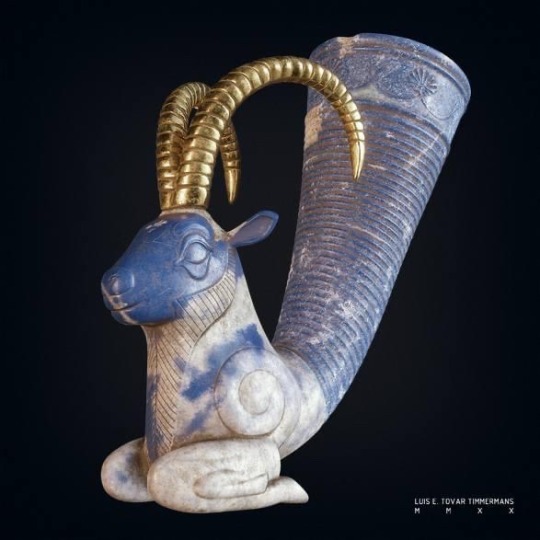
In the heart of the ancient Achaemenid Empire, a masterpiece of Persian artistry emerges—a rhyton (drinking horn or in the shape of a horn) carved from the deep blue lapis lazuli and adorned with gold, taking the form of a majestic ibex (mountain goat).
Dating back to the 6th to 5th century BCE, this exquisite ceremonial vessel not only exemplifies the sophisticated craftsmanship and rich symbolism of the time but also provides a fascinating glimpse into the cultural and economic prowess of ancient Persia.
[Description and Material]:
*Material:
Lapis lazuli, a semi-precious stone prized for its deep blue color, was highly valued in ancient Persia and sourced primarily from what is now Afghanistan.
*Form:
The rhyton is shaped like an ibex, a type of wild goat with prominent, curved horns, reflecting the importance of nature and animal motifs in Persian art.
[Use]:
*Function:
A rhyton is a type of vessel typically used for drinking or pouring liquids, especially in ceremonial contexts. The liquid would be poured from the top and flow out through the spout, which could be the mouth of the animal in this case.
*Ceremonial Role:
Rhytons were often used in religious and royal ceremonies. The choice of lapis lazuli and the intricate craftsmanship suggest that this particular rhyton was likely used by the elite, possibly in rituals associated with the Zoroastrian religion or royal banquets.
[Cultural and Historical Significance]:
*Art and Symbolism: The ibex design reflects the importance of wildlife in Persian culture and the symbolic use of animals in conveying power and divinity. The ibex, with its strong and agile form, could symbolize qualities such as strength and resilience.
*Trade and Wealth: The use of lapis lazuli indicates extensive trade networks and the wealth of the Achaemenid Empire, as this material was not locally sourced and had to be imported.
*Royal Patronage: The Achaemenid rulers were great patrons of the arts, and such luxurious items underscore their desire to display their wealth, power, and cultural sophistication.
[Academic Perspective on Material Culture]:
*Cultural Synthesis:
Scholars often view Achaemenid art, including rhytons, as a synthesis of various cultural influences, including Mesopotamian, Egyptian, and Greek, reflecting the diverse and cosmopolitan nature of the empire.
*Representation of Power:
Academics see these artifacts as representations of royal propaganda, showcasing the divine right and grandeur of the Persian kings.
*Symbol of Status:
In material culture studies, such high-quality items are considered symbols of social status and wealth. They provide insights into the social hierarchy and economic conditions of the time.
*Artistic Techniques:
The craftsmanship of the rhyton is analyzed for its artistic techniques, such as carving and polishing lapis lazuli, which indicate advanced skills and aesthetic values.
[Notable Examples]:
Museums and Collections: Notable examples of such rhytons can be found in major museum collections, such as the British Museum and the Louvre, where they are studied and displayed as prime examples of Achaemenid artistry and craftsmanship.
In conclusion, the lapis lazuli rhyton in the shape of an ibex from the Achaemenid period is a significant artifact that illustrates the artistic, cultural, and economic aspects of ancient Persia. It serves as a key piece of material culture, providing valuable insights into the ceremonial practices, trade networks, and socio-political dynamics of the Achaemenid Empire.
#ancient Persia#Zoroastrianism#ceremonial vessel#rhyton#lapis lazuli#Iran#Mesopotamia#Ancient history#Near East#ancient civilisations#ancient art#ancient craft#archaeology#Achaemenid#Achaemenid Culture
50 notes
·
View notes
Text
A small, tube-shaped stone container discovered in Iran seems to have once encased a bright red pigment similar to lipstick.
Analysis of traces left inside the container show ingredients that are remarkably close to the ingredients in lip pigments used today. It is, scientists say, probably the earliest known example of the use of lip paint by humans.
The ancient lipstick appears indicative of a culture advanced enough for the knowledge of metallurgy and chemistry required to develop such innovations.
Continue Reading.
98 notes
·
View notes
Text

Chogha Zanbil Ziggurat - Iran
#Chogha Zanbil#iran#ziggurat#light#archaeology#architecture#magic#annunaki#consciousness#extraterrestrial#ascension#alchemy#energy#ancient#archeology#esoteric#ruins#pyramid#engineering#alien
36 notes
·
View notes
Text
Dovetail joints in Achaemenid Palaces

Dovetail joints have been used in woodworking for thousands of years. About 2,500 years ago in ancient Iran (Persia) they were also used in the construction of Achaemenid palaces (such as Persepolis, Susa or Bardak Siah Palace in Bushehr province in the south of Iran). (550 to 330 BC). They were used to connect different stone parts of the structures.
Photo Source

Joining two pieces of stone with a dovetail joint at Persepolis.
This method has also been used in Urartu, Median, Egyptian, and Greek civilizations.
30 notes
·
View notes
Text

C.C. Lamberg-Karlovsky - Excavations at Tepe Yahya, Iran, 1967-1969 - ASPR/AIPU - 1970
#witches#neolithics#occult#vintage#excavations at tepe yahya#tepe yahya#excavations#american school of prehistoric research#the asia institute of pahlavi university#peabody museum#harvard university#pahlavi university#shiraz university#c.c. lamberg-karlovsky#iran#persia#archaeology#report 1#bullettin 27#woman#slim#1967-1969#1970#beauty
33 notes
·
View notes
Text
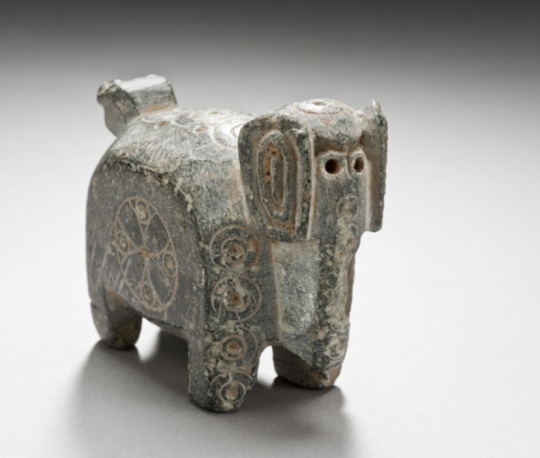
Elephant figure, carved of stone
Nishapur, Iran
(10th century CE)
82 notes
·
View notes
Photo


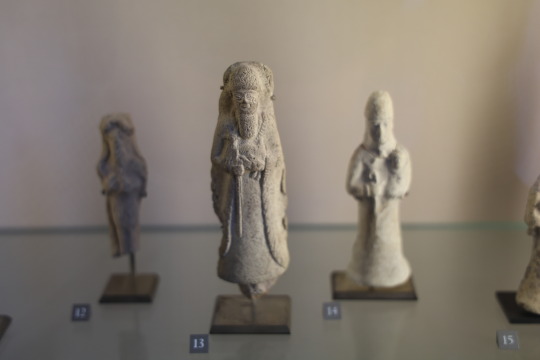

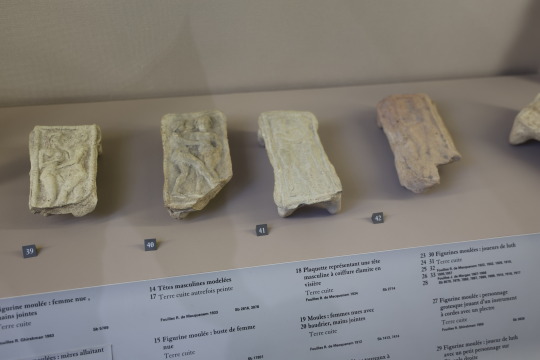
Terracottas from Susa, Iran
Middle Elamite period, 14th-12th centuries BCE
Musée du Louvre
188 notes
·
View notes
Text
This ancient articraft was found!
TEHRAN – An engraved stone has recently been unearthed accidentally in the small village of Sahzab,East Azarbaijan province, northwest Iran,during a construction project,a senior police official in charge of protecting cultural heritage has said.
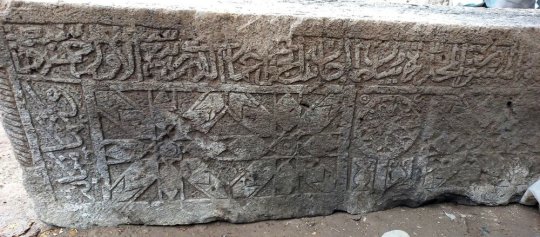
The locals soon informed authorities in charge of protecting the cultural heritage, and the stone was handed over to the village council for better protection, Kazem Dadashi explained on Tuesday.
Soaked in history and culture for millennia, Tabriz, which is the capital of East Azarbaijan, embraces several historical and religious sites, including Jameh Mosque of Tabriz and Arg of Tabriz, and UNESCO-registered Tabriz Historic Bazaar Complex to name a few. The city became the capital of the Mongol Il-Khan Mahmud Gazan (1295–1304) and his successor. Timur (Tamerlane), a Turkic conqueror, took it in 1392. Some decades later, the Kara Koyunlu Turkmen made it their capital. It was when the famous Blue Mosque was built in Tabriz.

The city retained its administrative status under the Safavid dynasty until 1548 when Shah Tahmasp I relocated his capital westward to Qazvin. During the next two centuries, Tabriz changed hands several times between Persia and the Ottoman Empire. During World War I, the city was temporarily occupied by Turkish and then Soviet troops.
source:https://www.tehrantimes.com/news/479181/Engraved-stone-discovered-accidentally-in-northwest-Iran
#Iran#iranian ancient artifact#engraved stones#East Azarbaijan#iran archaeology#archaelogy#Iran Tabriz#Safavid dynasty#UNESCO#police official in charge of protecting cultural heritage#culture#cultural heritage
1 note
·
View note
Text

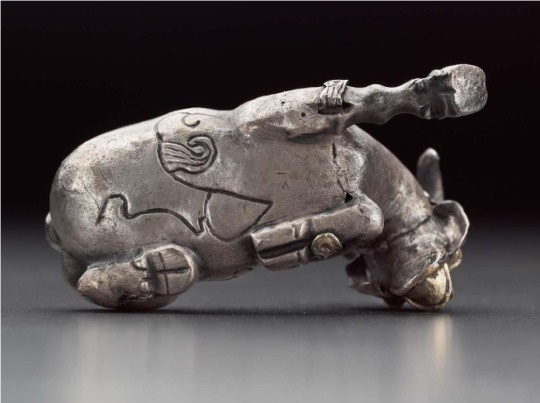
~ Mountain goat.
Place of origin: Near Eastern, Iranian
Period: Elamite, Proto-Elamite
Date: 3500–2700 B.C.
Medium: Silver and sheet gold.
#ancient#history#ancient art#museum#archeology#ancient sculpture#ancient history#archaeology#iran#iranian#near east#near eastern#elamite#3500 b.c.#2700 b.c#silver#goat#mountain goat
2K notes
·
View notes
Text
I think one of the most interesting things about this is that the formula for making lipstick doesn't seem to be all that different from lipsticks today.
38 notes
·
View notes
Text
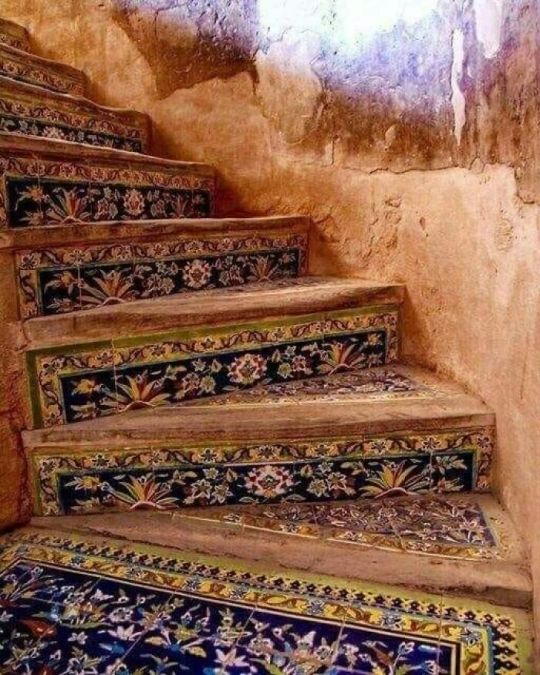
Tiled Stairs In Ali-Qapu Palace In Isfahan - Iran Built By The Safavid King Shah Abbas I At The End Of The 16th Century (1597).
#tiled stairs#Ali-Qapu Palace#isfahan#iran#safavid#king shah abbas I#1597#end of the 16th century#tiles#archaeology
58 notes
·
View notes